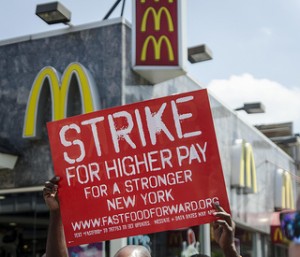
Isn’t it ironic that “much of our ‘independence,’ where it exists, is made possible by supports and resources that have been provided by others”? In an interview with the Washington Post, Oregon State’s Richard A. Settersten, Jr. calls attention to one important instance of this irony: the rigid tie between the “independence” of young people and leaving the home. For Settersten, Jr., common (and paranoid) misunderstandings about “permanent” and “alarming” generational trends in living at home are problematic not simply because they are inaccurate, but because they point to a misguided ideal of “independence.”
To clarify how patterns in young adult living arrangements have varied over time, he notes:
This isn’t new. If we look back over the last century, we can see that the rush out of the parental home was a post-World War II phenomenon, and proportions have been growing since 1970…. What’s remarkable about the early adult years today is not that young people live with parents but that they live without a spouse…. Marriage and parenting now culminate the process of becoming adult rather than start it.
Settersten, Jr. also clarifies who chooses to live at home and why. He indicates that men of every age group are more likely to live with parents, mentioning their higher rates of dropping out of school, unemployment, and a higher average age of marriage as possible reasons why. Individuals of disadvantaged groups also tend to live at home at greater rates—possibly because they are more likely to live in high-cost metropolitan areas or because young people in their culture are expected to contribute to family resources. Moreover, according to Settersten, Jr.,
For many families, living at home is a strategic choice that permits young adults to attend or reduce the cost of higher education, take internships, or create a nest egg. (It may also be necessary for paying down student loans.) For them, it’s not about being locked out of the labor market, but about building a more secure economic future.
So before tossing aside the “boomerang generation” as dependent “failures to launch,” consider how peculiar it is “that we expect young people to somehow strive for complete independence when those of us who are no longer young realize that adult life is heavily conditioned by relationships with other people.” Settersten, Jr. has a point.
To learn how this notion of independence is affecting older adults, check out Stacy Torres’s article on Families as They Really Are.
For a different take on the role of the economy in millenials’ living arrangements, see this article by Lisa Wade.
If you’re a teacher, here’s a great lesson by Kia Heise to start a class conversation about living alone as a ‘rite of passage’ into adulthood.

